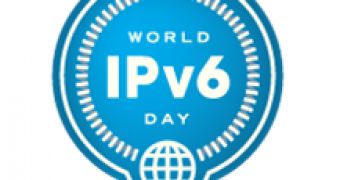Microsoft is one of the companies participating in World IPv6 Day, an initiative designed to test readiness for the transition to next generation Internet Protocol (IPv6) from the now all but obsolete IPv4. Since World IPv6 Day is scheduled to last all day today, June 8th, 2011, the Redmond company has enabled IPv6 to a few of its top online properties, including Bing.com, Xbox.com and Microsoft.com.
The fact of the matter is that as far as users are concerned there’s really no difference in terms of the browsing experience between IPv4 and IPv6.
“Most Internet users won’t even notice that this test is happening. People with only IPv4 connectivity should continue to connect via IPv4, without any degradation in the experience,” explained Christopher Palmer, IPv6 Program Manager, Windows Core Networking, Microsoft.
“Users with IPv6 Internet capabilities should automatically utilize IPv6 when connecting to a participating website. To use IPv6, your Internet Service Provider needs to support it, as well as your computer.”
IPv6 is the only solution to the problem represented by the limited number of IPv4 addresses, which have effectively ran out, since the last batch of the approximately 4.3 billion addresses were already allocated in February 2011.
By comparison, IPv6’s address space supports no less than 2128 addresses, and the Internet won’t come close to exhausting them anytime soon.
Per estimates, 99.99% of Internet users should not experience any type of problems when using IPv6. Palmer pointed to this blog post from Microsoft, and to the test included at the bottom of the article, designed to test IPv6 readiness.
Users running Windows XP, Windows Vista or Windows 7 should have absolutely nothing to worry about.
“Looking to World IPv6 Day and beyond, we’ve accelerated work with ISPs, hardware vendors, and content delivery networks to make progress on the last stage of the IPv6 transition – end-to-end access to content,” Palmer added.
“World IPv6 Day is more than verifying that websites support a new protocol. Rather, it is about substantiating that the Internet as a whole is ready to upgrade to IPv6. We’re tremendously excited about our many IPv6 investments coming together in support of the transition and that our next generation Web experiences are going to be available via the next-generation Internet.”

 14 DAY TRIAL //
14 DAY TRIAL //